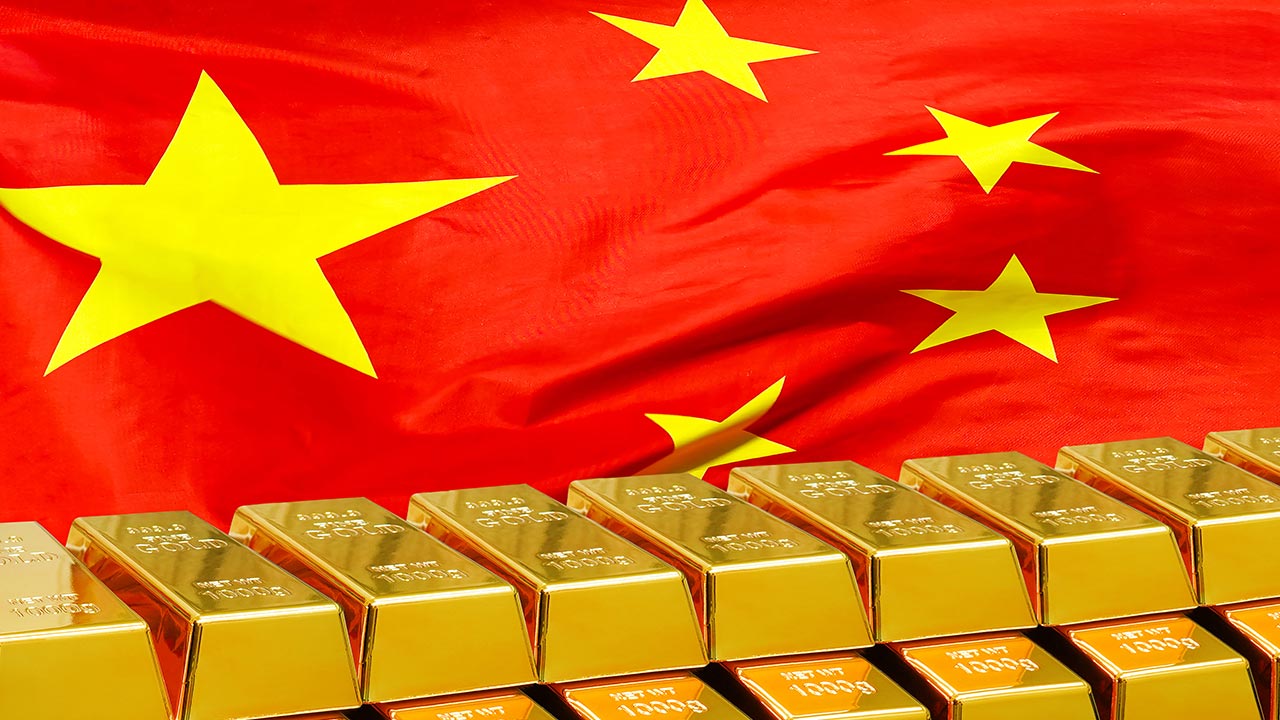 Parler
Parler Gab
Gab
- On Wednesday, gold prices dropped sharply to a two-week low of $3,220.54 per ounce after Chinese traders sold nearly 1 million ounces on the Shanghai Futures Exchange (SHFE) and Shanghai Gold Exchange (SGE), marking the largest single-day liquidation in months.
- The abrupt sell-off highlighted China's growing influence on global gold markets, reversing a historic surge that had pushed spot gold to a record $3,500, driven by significant inflows into Chinese ETFs like Huaan Yifu and Bosera.
- The sell-off was attributed to short-term liquidity pressures and the upcoming May Day holiday, while long-term factors such as a weakening U.S. dollar, central bank de-dollarization and geopolitical instabilities continue to support gold's upward trajectory.
- Chinese retail investors have been driving gold ETF purchases, while U.S.-based ETFs have seen outflows, reflecting a broader trend of central banks diversifying away from the U.S. dollar. Over the past three years, central banks have acquired over 3,000 metric tonnes of gold, with China, Russia and India leading the charge.
- The recent volatility underscores gold's dual role as both a safe haven and a speculative asset. Analysts predict that once the current volatility subsides, gold will resume its climb, supported by factors such as potential Fed rate cuts and ongoing geopolitical tensions.
Structural drivers underneath the short-term turmoil
The sell-off unfolded against persistent long-term forces propelling gold higher, including weakening U.S. dollar expectations, central bank de-dollarization and geopolitical instabilities. Ole Hansen, Saxo Bank’s head of commodity strategy, emphasized that gold’s structural drivers remain intact, pointing to a 2025 supply deficit projected for silver and persistent inflation fears. “While risk sentiment improved briefly, the economy’s fragility and fiscal deficits ensure gold’s safe-haven appeal,” he said. Indeed, gold’s year-to-date gains — up 22% — reflect enduring macroeconomic turmoil: a 4.0% Q1 U.S. GDP slump and flatlining Chinese factory data have deepened fears of synchronized slowdowns. Meanwhile, the U.S.-China trade conflict’s unresolved tensions continue to underpin strategic investment in gold as a hedge. Silver, though tied to industrial demand, mirrored the volatility, sliding to $32.33 per ounce despite an 11% 2025 rise. Analysts noted silver’s dual nature: its “paper” value, like gold’s, is influenced by macro trends, while physical scarcity bolsters its long-term narrative.ETF activity and the global allocation shift
Inflow patterns reveal a stark divide between East and West. Chinese retail investors drove a gold ETF buying binge, surpassing all 2024 inflows in months as the yuan’s weakness and real estate market woes spurred demand. U.S.-based ETFs, however, faced outflows, signaling a cooling of Western institutional enthusiasm. The geographic split mirrors broader diversification trends, as central banks accelerate de-dollarization. Over the last three years, central banks scooped up over 3,000 metric tonnes of gold, with China, Russia and India leading efforts to reduce reliance on the U.S. dollar. This shift, Hansen argued, is a “long-term support pillar” for gold, as supply remains constrained by declining mine output. However, liquidity gaps have emerged. Goldman Sachs’ data revealed gold futures plunged 5.9% during U.S. trading hours in late April but soared 14.7% when markets pivoted to Asia — a divergence underscoring how gold has become a “flow commodity,” sensitive to short-term speculative moves.Holiday hurdles and the path forward
Analysts are now focused on whether Chinese demand recovers after the nine-day May Day holiday. With markets closed through May 5, the Asian bid has vanished, exposing gold to near-term declines. Fibonacci retracement models suggest support near 3,165, but further corrections could target 3,000 — a psychologically critical level. Hansen stressed that gold’s two-week drop is a pause, not a reversal: “The structural drivers haven’t changed. Once volatility settles, this market will resume its climb.” Fed Funds futures pricing a 75–100 basis point rate cut by year-end further support his view, as lower rates reduce gold’s opportunity cost. Investors are also watching central bank actions. The People’s Bank of China’s gold reserves, opaque and privately held, may still outpace official disclosures, amplifying speculation about true holdings. Meanwhile, Morgan Stanley’s analysis confirmed the “Asian market's 25’s rally, making holiday returns pivotal for liquidity.”Gold’s brief dip amplifies its dual role as safe haven and speculative tool
Gold’s wild week demonstrated its identity crisis in 2025: simultaneously a macroeconomic predictor and a momentum-driven asset. While temporary Chinese selling and dollar resilience have stung traders, the metal’s broader narrative — geopolitical anxieties, inflation fears and de-dollarization — remains unresolved. As Asian investors return from holiday, markets will test whether the rally can rebound past $3,500 or succumb to new liquidations. Whatever happens, the era of gold’s outsized Asian influence has arrived — transforming the timeless metal into a mirror reflecting global markets’ fragile equilibrium. Market observers will monitor the Shanghai exchanges in the coming weeks for signs of another surge — or whether gold’s newest bid has already slipped away. Sources for this article include: ZeroHedge.com USAgold.com Home.SaxoEU to ban privacy cryptocurrencies and anonymous accounts by 2027 under new AML rules
By Laura Harris // Share
Allan Campbell: Fight inflation and food scarcity by GROWING YOUR OWN FOOD
By Kevin Hughes // Share
Trump and UK strike historic trade deal, setting stage for global tariff negotiations
By Cassie B. // Share
Trump proposes cutting China tariff to 80% ahead of high-stakes trade talks
By Cassie B. // Share
EU takes Trump to WTO over tariffs, targets U.S. goods with €95 billion countermeasures
By Cassie B. // Share
Governments continue to obscure COVID-19 vaccine data amid rising concerns over excess deaths
By patricklewis // Share
Tech giant Microsoft backs EXTINCTION with its support of carbon capture programs
By ramontomeydw // Share
Germany to resume arms exports to Israel despite repeated ceasefire violations
By isabelle // Share










